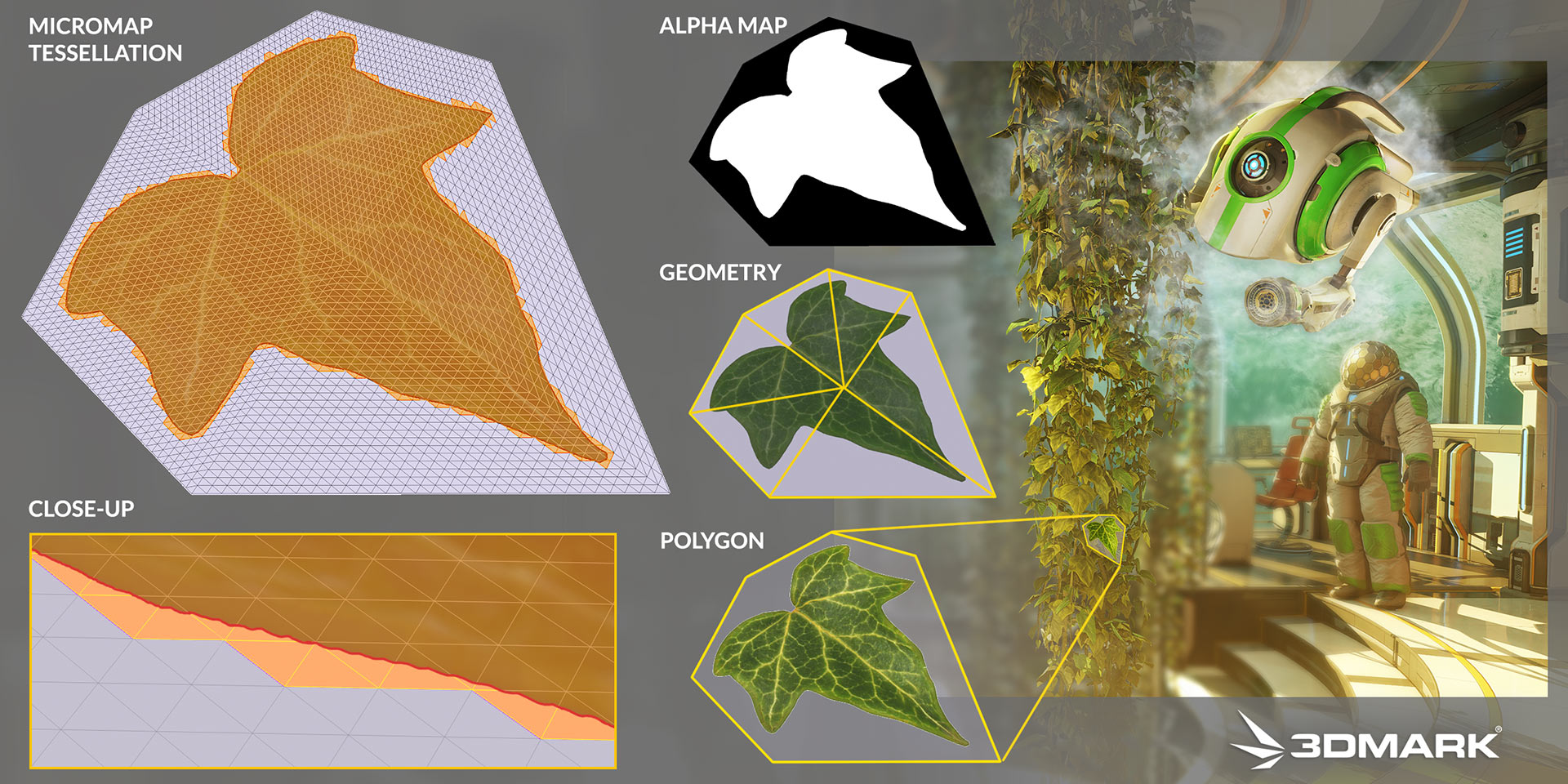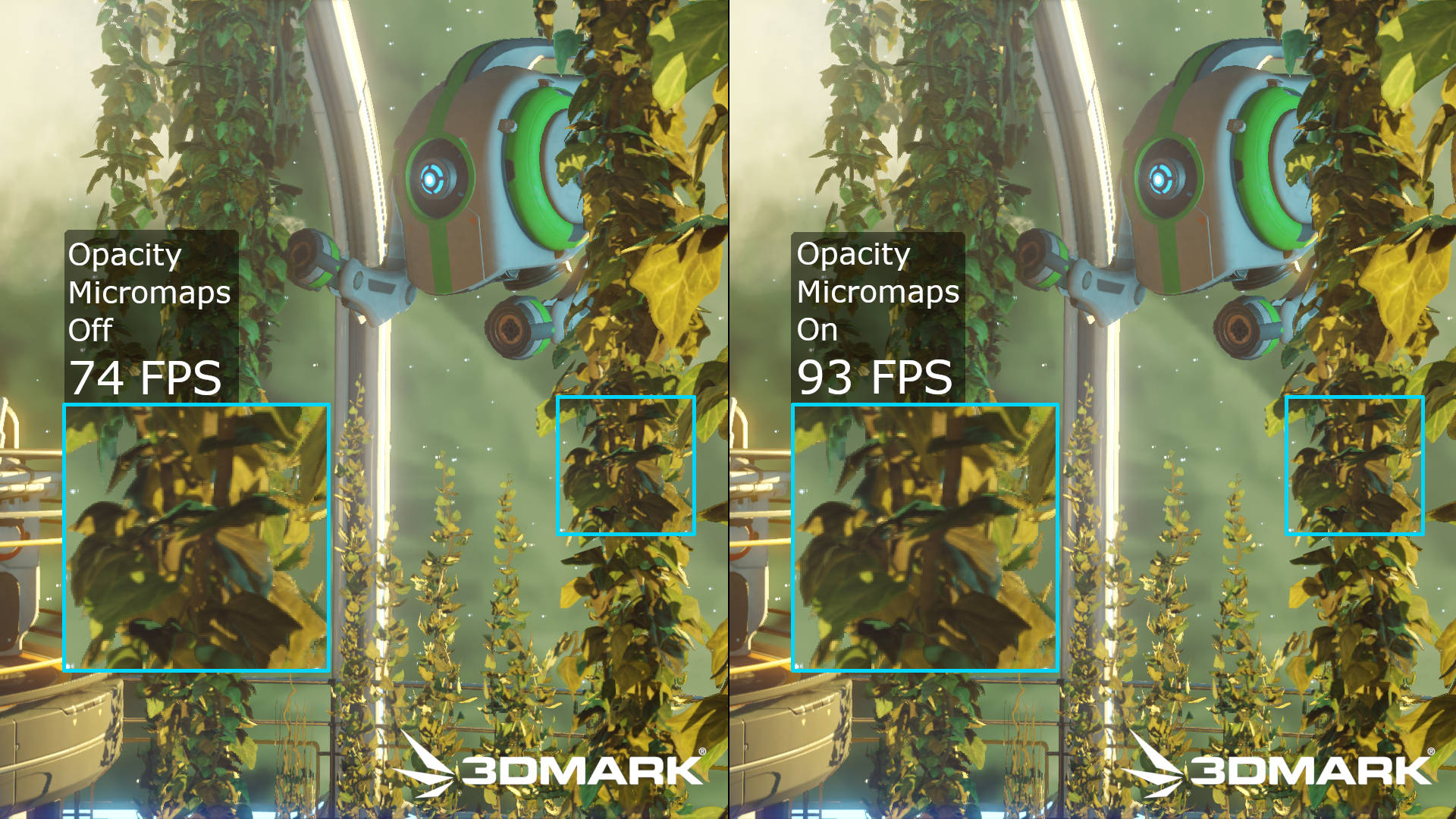New Opacity Micromap test now in 3DMark for Android
October 9, 2024
Today we’re releasing the new Opacity Micromap feature test as a free update to 3DMark for Android.
The 3DMark Opacity Micromap feature test was developed in partnership with MediaTek. This test supports any Android device with an SoC supporting the Vulkan VK_EXT_opacity_micromap extension.
At the time of this feature test’s release, MediaTek’s Dimensity 9400 is the only SoC available to consumers that currently supports this API extension on Android.
Watch the Simplified Chinese language version of this video here
Opacity Micromaps improve raytracing performance for geometry that use a technique called alpha testing - using alpha map textures with only fully opaque and fully transparent areas. Alpha testing is commonly used by game developers for more efficiently rendering objects with lots of fully transparent parts, such as foliage or wire fences.
With Opacity Micromaps, graphics hardware can reduce the overall raytracing workload for these objects by more efficiently identifying regions of geometry that are either fully opaque or transparent. This means certain shader calculation steps can be skipped for these regions, improving raytracing performance for scenes featuring alpha-tested geometry.
3DMark Opacity Micromap feature test
The below image shows how a micromap tessellation is generated using the alpha map and foliage geometry in the 3DMark Opacity Micromap feature test. This micromap is stored in a compressed form alongside the geometry mesh and is only used for raytracing.
In the feature test, Opacity Micromaps are used for the hanging foliage in the scene. In our implementation, we maximize the performance benefits of Opacity Micromaps by using them to skip ray query hit candidates and their in-shader alpha testing entirely, with minimal impact to overall image quality.
Results supplied by MediaTek from an android device using a MediaTek 9400 SoC.
Available Now
You can run the 3DMark Opacity Micromap feature test in 3DMark for Android, available for free on the Google Play Store.
Please note that this test is for demonstrating the performance benefits of Opacity Micromaps and is not a device benchmark.
This feature test requires an Android device that supports the Vulkan VK_EXT_opacity_micromap extension, such as devices with the new MediaTek Dimensity 9400 SoCs.
Get 3DMark for Android from the Google Play Store
3DMark Opacity Micromaps feature test – Trailer
Recent news
-
Procyon Labs launches with FLUX.1 AI Image Generation Demo
November 4, 2025
-
3DMark Solar Bay Extreme is available now!
August 20, 2025
-
3DMark Speed Way Teams up with PC Building Simulator 2!
July 17, 2025
-
New Procyon AI Benchmark for Macs now available
June 25, 2025
-
3DMark for macOS available now!
June 12, 2025
-
New Inference Engines now available in Procyon
May 1, 2025
-
Try out NVIDIA DLSS 4 in 3DMark
January 30, 2025
-
Test LLM performance with the Procyon AI Text Generation Benchmark
December 9, 2024
-
New DirectStorage test available in 3DMark
December 4, 2024
-
New Opacity Micromap test now in 3DMark for Android
October 9, 2024
-
NPUs now supported by Procyon AI Image Generation
September 6, 2024
-
Test the latest version of Intel XeSS in 3DMark
September 3, 2024
-
Introducing the Procyon Battery Consumption Benchmark
June 6, 2024
-
3DMark Steel Nomad is out now!
May 21, 2024
-
Procyon AI Inference now available on macOS
April 8, 2024



